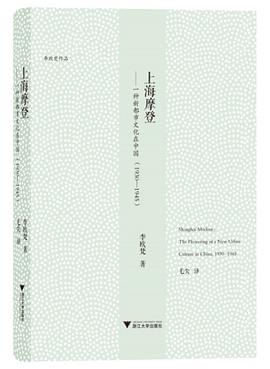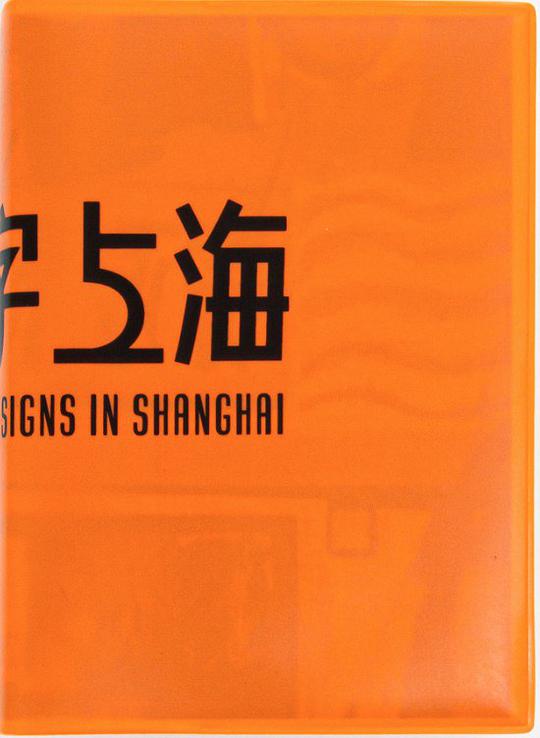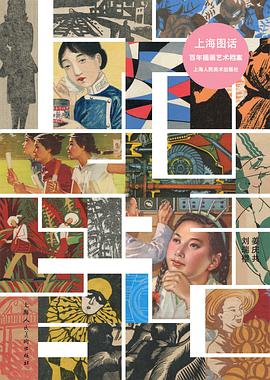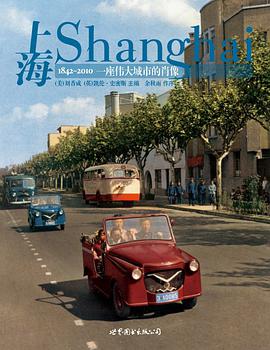上海
隐字上海 豆瓣
作者:
格里董
/
施佳宇
…
The Type
2020
- 9
倘若看得仔细些,上海的街头是有双重模样的。与高耸入云的摩天大楼和时尚名品商店共存的,还有端庄的石库门,狭窄的小弄堂,以及旧时光里的店面招牌。曾经的十里洋场,有幸在这些隐秘的角落里得以重现。 时代变迁,许多城市正在改头换面的浪潮中迅速丢弃自己原有的景观。作为曾经的「东方巴黎」,上海的文字风景也正在经历着巨大的消亡。近年来中国各大城市相继开展以「市容更新」为名的行动,拆除店铺和招牌,却偶尔揭开了隐藏在背后的年代更久远的老招牌或文字,犹如意外发现的考古现场,让人觉得十分有趣。 「隐字」风景大抵有两种:昔日落在街角或弄堂深处的烟杂店、酱油店、副食品店,柴米油盐酱醋茶,手写招牌显得朴拙而亲切;或是隐藏在拆除的招牌里层、新搭建的脚手架背后、碎石瓦砾间的「字体遗址」,其背后的空间早已易主或不复存在,但偶尔残留的招牌仍能带我们闪回到彼时的马路风景中——气味浓郁的是「永好理发店」,污渍斑驳的是「第一油酱店」,色彩分明的是「临青绸布店」,嘎吱作响的是「明峰维修店」……干净利落的手写字体未必出自名家,却别有风味,和周围的电线杆、自行车、晾晒的衣物、或悠闲或匆忙的行人一起,构成了一幅幅鲜活的上海图景。 旧时的店名和字形,携带着抹不去的时代印记:丰润饱满的繁体楷书招牌,往往可以追溯到民国或清末;社会主义特色的语词、汉语拼音和二简字,见证了建国后的语言文字改革;带着行政区划名称和编号的粮油果品烟杂百货店,是计划经济下的产物;将经营产品和广告语诚恳地写在街角旺铺的门檐上、墙身上或挂在门外,则似乎是跨越时代的招徕生意之道。已经归并至大区的南市、闸北、卢湾,尚属当代,它们的名称停留在还未破落的招牌上,不疾不徐地等待着与同代人一起走进历史。 隐藏的字迹是上海新旧交替的佐证,却也注定昙花一现。伴随着新店铺的开张、新招牌的安装、新街区的建设,露出的旧字很快又将回归隐匿,甚至彻底拆除。本书中收录了三位摄影师在过去六七年间记录的文字风景,如今也大多难以寻觅,幸而光影可以记录下这一道道风景,替我们唤起属于那个时代的独家记忆。
When you look closely, streets in Shanghai have two layers of appearance. Besides the towering skyscrapers and the boutique fashion stores, you will find the dignified Shikumen, the narrow alleys, and storefront signs from the olden days. The city’s colonial past is recreated through these hidden nooks and crannies. As time goes by, cities are rapidly discarding their original façade in the tide of urban regeneration. Likewise, Shanghai, referred to as “Paris of the Orient”, is undergoing a dramatic demise of its typographical landscape. In recent years, China’s major cities have carried out a number of initiatives in the name of urban planning to demolish shabby shops and remove worn-out banners, but occasionally they have uncovered even older sign boards or writing hidden behind the recent construction, like accidental archaeological mini-sites filled with surprises. There are broadly two categories of “uncovered signs”. One is the handwritten banners that are still visible at the streetcorners or deep inside the alleyways, in front of the stores that sell cigarettes, food, oil and sauce; the other is the “type relics” concealed under the removed banners, behind the newly erected scaffolding, or among the rubble of torn-down buildings. The original venues behind the latter have long since changed hands or ceased to exist, but the remnants of the signs project a flashback to the street views of the past – that gel smell from the Forever Good Barber’s Shop, that stain from the No.1 Oil & Sauce Store, that vibrant colours from the silk & fabric shop, and that squeaky noise from the repair shop. The simple and clean handwriting might not come from a master’s hands, but its unique personality is a missing piece of the urban landscape, accompanied by the surrounding telephone poles, bicycles, laundry hanging out of the windows, and strolling or hurrying pedestrians. The text and form of the uncovered signs carry with them indelible marks of yesterday. Traditional Chinese characters in plump calligraphy style can probably date back to the Republic of China or even the late Qing Dynasty; socialist vocabularies, Pinyin (romanised pronunciation of Mandarin Chinese) and the second-level simplified Chinese characters were witnesses to the social and language reform after the founding of the People’s Republic of China; food and commodity shops named after the administrative divisions with sequence numbers were the products of a planned economy; adorning the header of the corner store with menus and slogans, painting them on the wall or hanging them outside the door seem to be the time-transcending advertising tactics. While Nanshi, Zhabei and Luwan districts have already been merged into larger districts over the past decades, their names have been staying on the not-so-broken signs, uneventfully waiting to enter history along with the contemporary generation of citizens. Shanghai’s urban transformation is in evidence of those rediscovered, yet transient typography gems. With the installation of new shops, new banners and new neighbourhoods, the uncovered signs will soon be re-covered or even dismantled. The images collected in this book were documented by three photographers over the past seven years, yet most of the scenes are already hard to find today. Fortunately, we are able to preserve and revoke the memory through their lenses.
When you look closely, streets in Shanghai have two layers of appearance. Besides the towering skyscrapers and the boutique fashion stores, you will find the dignified Shikumen, the narrow alleys, and storefront signs from the olden days. The city’s colonial past is recreated through these hidden nooks and crannies. As time goes by, cities are rapidly discarding their original façade in the tide of urban regeneration. Likewise, Shanghai, referred to as “Paris of the Orient”, is undergoing a dramatic demise of its typographical landscape. In recent years, China’s major cities have carried out a number of initiatives in the name of urban planning to demolish shabby shops and remove worn-out banners, but occasionally they have uncovered even older sign boards or writing hidden behind the recent construction, like accidental archaeological mini-sites filled with surprises. There are broadly two categories of “uncovered signs”. One is the handwritten banners that are still visible at the streetcorners or deep inside the alleyways, in front of the stores that sell cigarettes, food, oil and sauce; the other is the “type relics” concealed under the removed banners, behind the newly erected scaffolding, or among the rubble of torn-down buildings. The original venues behind the latter have long since changed hands or ceased to exist, but the remnants of the signs project a flashback to the street views of the past – that gel smell from the Forever Good Barber’s Shop, that stain from the No.1 Oil & Sauce Store, that vibrant colours from the silk & fabric shop, and that squeaky noise from the repair shop. The simple and clean handwriting might not come from a master’s hands, but its unique personality is a missing piece of the urban landscape, accompanied by the surrounding telephone poles, bicycles, laundry hanging out of the windows, and strolling or hurrying pedestrians. The text and form of the uncovered signs carry with them indelible marks of yesterday. Traditional Chinese characters in plump calligraphy style can probably date back to the Republic of China or even the late Qing Dynasty; socialist vocabularies, Pinyin (romanised pronunciation of Mandarin Chinese) and the second-level simplified Chinese characters were witnesses to the social and language reform after the founding of the People’s Republic of China; food and commodity shops named after the administrative divisions with sequence numbers were the products of a planned economy; adorning the header of the corner store with menus and slogans, painting them on the wall or hanging them outside the door seem to be the time-transcending advertising tactics. While Nanshi, Zhabei and Luwan districts have already been merged into larger districts over the past decades, their names have been staying on the not-so-broken signs, uneventfully waiting to enter history along with the contemporary generation of citizens. Shanghai’s urban transformation is in evidence of those rediscovered, yet transient typography gems. With the installation of new shops, new banners and new neighbourhoods, the uncovered signs will soon be re-covered or even dismantled. The images collected in this book were documented by three photographers over the past seven years, yet most of the scenes are already hard to find today. Fortunately, we are able to preserve and revoke the memory through their lenses.
上海图话 豆瓣
作者:
姜庆共
/
刘瑞樱
2019
- 8
致读者:当你面对充满皱褶的封面,请不要惊讶,
我们只是想以此来寓意沉溺于故纸堆的惊讶及过程,
期待与你分享这份感受。
100年
249位插画师、艺术家、设计师
450余幅图像
10篇口述
以年代为序勾勒上海百年插画艺术的视觉历程,
与《上海字记》共同集成“字与画”的城市文化图像简史。
从清末小说绣像、西人引入的科技铜版画,
到朵云轩木版水印、民初西式美术教育带来的审美格调,
国货运动的商业 广告包装 ,战时的红色印迹,
至新中国工业腾飞、改革开放掀起的流行风尚……
插画于各个年代及各个领域的表现形式,
在本书中悉数展陈在读者面前。
本书出版获上海文化发展基金会图书出版专项基金资助
我们只是想以此来寓意沉溺于故纸堆的惊讶及过程,
期待与你分享这份感受。
100年
249位插画师、艺术家、设计师
450余幅图像
10篇口述
以年代为序勾勒上海百年插画艺术的视觉历程,
与《上海字记》共同集成“字与画”的城市文化图像简史。
从清末小说绣像、西人引入的科技铜版画,
到朵云轩木版水印、民初西式美术教育带来的审美格调,
国货运动的商业 广告包装 ,战时的红色印迹,
至新中国工业腾飞、改革开放掀起的流行风尚……
插画于各个年代及各个领域的表现形式,
在本书中悉数展陈在读者面前。
本书出版获上海文化发展基金会图书出版专项基金资助
上海 豆瓣
Shanghai: A History in Photographs, 1842-Today
作者:
[美]刘香成
/
[英]凯伦·史密斯
译者:
金燕
世界图书出版公司·后浪出版咨询(北京)有限责任公司
2010
- 5
“上海,是一个充满了美妙的矛盾与奇异反差的国际大都会。她俗艳,然而美丽;虚荣,但又高雅。上海是一幅宽广壮阔、斑驳陆离的画卷,中国与外国的礼仪和道德相互碰撞,东西方的最好与最坏在这里交融。”
1934年出版的《上海大全》(All about Shanghai and Environs)是上海最早的旅游指南之一。那本书中这样描述鼎盛时期的上海:19世纪中期到来的西方冒险家和商人,已经成功地在这片黄浦江边的淤滩之上创造出一个重要的国际贸易口岸。对于外国殖民者来说,上海最初是作为鸦片贸易中转站发展起来的;对于清政府来说,上海则标志着民族被奴役的屈辱。1842年第一次鸦片战争失败后,清政府被迫与列强签订一系列不平等条约,列强由此在上海等地获得领事裁判权。领事裁判权对历届中国政府来说都是国家的耻辱,也是他们后来竭力斗争以期甩掉的帽子。
在过去的近170年间,虽然历经了外敌入侵、民族解放战争、内战以及自然灾害,上海始终是中国最著名的城市,充满着相反相成的对立与矛盾。今天,正如对19世纪的冒险家和创业者而言的那样,“上海”依然是时尚、文化、商业和机会的代名词;只不过,现代上海是由当代中国企业家和各方汇集此地的人民而不是外国投机者所创造的。
《上海:1842—2010,一座伟大城市的肖像》(Shanghai: A History in Photographs, 1842-Today)通过珍贵的历史照片、全世界最重要的私人收藏以及当代杰出摄影师的作品,讲述了现代上海如何由各种力量塑造而成的故事。同时,这一过程也可以被视作现代中国形成的缩影。本书编著者为上海这座极富魅力的城市提供了一部完美的视觉历史。
1934年出版的《上海大全》(All about Shanghai and Environs)是上海最早的旅游指南之一。那本书中这样描述鼎盛时期的上海:19世纪中期到来的西方冒险家和商人,已经成功地在这片黄浦江边的淤滩之上创造出一个重要的国际贸易口岸。对于外国殖民者来说,上海最初是作为鸦片贸易中转站发展起来的;对于清政府来说,上海则标志着民族被奴役的屈辱。1842年第一次鸦片战争失败后,清政府被迫与列强签订一系列不平等条约,列强由此在上海等地获得领事裁判权。领事裁判权对历届中国政府来说都是国家的耻辱,也是他们后来竭力斗争以期甩掉的帽子。
在过去的近170年间,虽然历经了外敌入侵、民族解放战争、内战以及自然灾害,上海始终是中国最著名的城市,充满着相反相成的对立与矛盾。今天,正如对19世纪的冒险家和创业者而言的那样,“上海”依然是时尚、文化、商业和机会的代名词;只不过,现代上海是由当代中国企业家和各方汇集此地的人民而不是外国投机者所创造的。
《上海:1842—2010,一座伟大城市的肖像》(Shanghai: A History in Photographs, 1842-Today)通过珍贵的历史照片、全世界最重要的私人收藏以及当代杰出摄影师的作品,讲述了现代上海如何由各种力量塑造而成的故事。同时,这一过程也可以被视作现代中国形成的缩影。本书编著者为上海这座极富魅力的城市提供了一部完美的视觉历史。



